|
|
|
|
![]()
Guitar Lesson of the week
Written by: Jeff Fiorentino
Produced by: Jeff Fiorentino, Kelly Ross
Edited by: Kelly Ross
Copyright © 2006 JFRocks All rights reserved
The technique lessons featured on this page are designed to be for Electric guitar. Most of the lessons covered here however will transfer to acoustic without any issue. This lesson page will be updated as often as possible. The other pages on JFRocks and JFRocks UNplugged keep me rather busy and I try to keep all technique lessons to CD ROM or DVD. What this page will do a lot of the time is expand upon lessons covered on various CD ROMs. If this is the case the Category below will state which CD ROM or DVD the lesson is expanding on. I hope you enjoy these mini lessons as I call them and remember all lessons from the past are located on the Lesson Archives page.
| Lesson Title | Intro to JAZZ part 1 (Chord structure) |
| Geared for | Beginner level to lower intermediate |
| CD Category | Expansion on Beginners 101 & Rhythm 101 |
| Guitar Tuning | Standard E, A, D, G, B, E |
| Primary Mode | N/A (not applicable) |
| Key | Am |
Tabs & Lesson
Original score by: Jeff Fiorentino
Transcription by: Jeff Fiorentino
INTERNET EXPLORER IS THE SUGGESTED BROWSER TO VIEW THIS PAGE PROPERLY.
Fonts may look weird, or not line up properly in Firefox or some other browsers if you have not set them up correctly..
_______________________________________________________________________________________________________________________
|
This Lesson's difficulty level 1-10 scale |
5 |
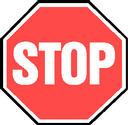
Please read the Lesson notes below
Thanks
Lesson notes
This lesson has actually come in by request quite a bit. Much like with the Progressive Rock lesson that's up in Beyond VH, Jazz lessons have been requested on numerous occasions.
I've put off doing any Jazz lessons until now, simply for the reason that I was trying to come up with a new way to teach it that would be easy for people to understand and also make it fun, as opposed to the utterly frightening way it's normally taught. Jazz is credited as the Guitar technique that scares people away from playing Guitar in a lot of cases, and is the cause of many teachers, including my own from when I was a kid losing many students. It can sometimes not be very fun. I on the other hand, aim to make it fun because if the fun isn't sucked out of it (as it often is) it's a very cool style of music that will in the end, if you're a ROCKER, make you a better ROCKER. A super ROCKER if you will...
First off, most of the requests that came in are from beginner level or intermediate level players that are confused by a lot of the information online about Jazz playing. I can totally dig that because coming from Jazz roots and still hanging and jamming with "Jazz guys" here locally in Los Angeles, I can honestly tell you that for the most part Jazz players love to flex their Theory muscles and use big words like Augmented this and A minor 13th diminished 9th that. It can all get a little confusing and rightly so. Jazz guitar, especially Jazz chords in particular are a very involved thing. This is not power chord music. This isn't double stop riffing for the most part. These chords need to speak. They have a richness to them. They don't sound good distorted for the most part and usually there is some stretching involved. This is musicians music, it's for the thinker. You have to use your head with Jazz.
Aside from the fact that there's some counting that really needs to be done with this style of music, there is also a feel to it that you can either nail or you just ain't got it. Some people just can't feel it. Just like with progressive rock, some players just can't go with it. In a lot of cases though it's just them being psyched out by either poor instruction or just their own self induced limitations, set forth by their subconscious.
By contrast many Jazz players have a great deal of difficulty with things like Van Halen for example. A few of my Jazz friends ask me to show them how to play Van Halen songs. A lot of them are closet Ed Heads, they love the free time feel that Van Halen has. They of course won't admit this to the other guys, nor do they alert the others to their purchase of a Solid Body Guitar. OH MY GOD NOT A SOLID BODY!! They sneak into my studio with it like it's a Guitar case full of contraband and the Police might be watching.
With some of them, even if I point out the exact Ed riff to them, they still can't feel it, yet, they can feel complex Jazz progressions and improvise leads over Bass lines that are out of this world in total free time that is impossible to even fathom counting out.
My point is, we all have our strong suits as Guitarists. Maybe you're great with Van Halen but Jazz isn't your bag. Maybe you're awesome with Jazz but you just can't get the feel of the Van Halen. To each his own I say. Do what you do best, but don't be afraid to try something new and don't be a music snob.
I think my lessons on Jazz will help a lot of you out. As always I'm going to break it down and water it down a bit. I'm not here to show off what I know or what I can play, I'm simply here to help you understand the many different facets of the Guitar. Jazz just happens to be one of those facets.
Jazz chord patterns move very quickly in a lot of cases. They move like a walking Bass line with the pitches that make up the chords sometimes mixed up, or used in a weird way.
An important term to understand with Jazz chords is "in the Bass" when a note is "in the Bass" it means it's the low note in the chord basically. For example, we all know the D/F# Jazz chord because Eddie Van Halen uses it all the time, it opens "Best of both worlds" for example. Well that chord is simply a D Major chord but the F#, or the 3rd, is "in the Bass" or is the lowest note, or Bass note as it's often called. Usually these Bass notes are indicated to the right of a slash when the chord name is written out.
The reason Jazz chord progressions do this is because the Guitar works closely in a lot of cases with what the Bass player is doing. Sometimes for example, notes are omitted from chords simply because the Bass is already doing it. So you allow the Bass player to carry the Root or the 5th or what ever.
For a simple example, take an "A7 Augmented chord" or A7+. That chord is made up of the pitches, A, C#, F, G. Root, 3rd, sharp 5th (augmented chord means to sharpen the 5th), and dominant 7th.
Maybe the Bass is driving an "A" the root.
You don't need to include the "A" in your chord if this is the case. You
can simply play your A7+ chord with the pitches, C#, F, G. This would make
the chord an, A7+/C# The note the right of the slash indicates what pitch
is "in the Bass".
Often times Jazz chords get even more mixed up, but just as an example you can
also mix up the order of the A7+ again and maybe this time you put the +5 in the
Bass so the chord is now, A7+/F. This gives it a whole other sound.
Chords in Jazz and chord progressions in Jazz are like playing Lead Guitar. I often talk about how what note you choose to start a solo or end a solo on will dictate the feel or mood of the solo and how the audience perceives it. Same goes here with these chords. The Bass in our example is driving an "A" the root of our A7+ chord. If I choose to put the 3rd in the Bass of my chord and play the A7+/C# my tune or chord change will have a totally different feel and mood to the listener than if I went with the +5 in the Bass and played the A7+/F instead.
This is only 1 simple example of this type of music, but what makes it differ from Rock music is there is usually less emphasis on the Root and more on the Tension and release aspect in the rhythm section. Often in Rock music the tension and release is geared more toward the solos. With Jazz granted there is a different feel to it but also part of that different feel comes from the fact that the tension and release of tension is spread throughout the whole song in a really in your face sort of way, Jazz moves like water in a lot of cases, you have to think of a River and how it flows and gets caught up on rocks once in awhile, and then there's rapids etc. etc. etc.... In essence the whole song is a big winding solo that takes you on some sort of a journey. Which is why Jazz is awesome jam music, and just a blast to do in an improvisational situation.
Some understanding of basic theory is needed though. The Blues Box isn't going to cut it here for the most part if at all. I strongly suggest, and highly recommend my Rhythm 101 and Beginners 101 CD ROMs for anyone who doesn't have a basic grasp of chords and basic chord theory. Although Rhythm 101 does get a bit advanced in places, I tend to teach "Useful" things only, rather than dwell on stuff that's not overly necessary for you to worry about.
Hopefully, with occasional site lessons here on JFRocks and a Jazz style DVD in the future, I can help you out with some of this and just boil it down into something that everyone at any level can sink their teeth into.
I'm not going to over complicate this stuff because there's enough of that going on out there as it is and over-complication is NOT what we do here at JFRocks.com. I also think that's why so many of you get a lot out of what do here on this site and its CDs.
Enjoy the lesson
Jeff Fiorentino
JFRocks.com
_____________________________________________________________________
Lesson
Moving Bass notes within given chords
We're going to use a couple chords as examples here and we're going to put together a progression of sorts, using different Bass notes. The Bass notes themselves are what's going to form the melody of what we're doing here. Those are what the audience will follow as they listen. The other notes that make up these chords are the voice. They give the mood to the Bass note. They're like the backup singers to a lead vocalist.
A7+
Pitches: A, C#, F, G
Root, 3rd, +5, 7th.
A7+ A7+/C# A+/F A7+/F <could also be called F+add2 there are actually about 20 different names this chord could have.
E___________5A____________________________________
B__6F_______ 6F______
6F_____8G_____________________
G__0G_______0G______
6C#____6C#_____________________
D__3F_______3F_______7A____
7A______________________
A__4C#______4C#______
8F____ 8F______________________
E__5A______________________________________________
Chord fingering suggestions
There are no set rules of thumb here but usually you can assume the index finger will be placed on the lowest fret in a given chord. This at least takes care of 1 finger anyway. Fingering is usually very logical. There are a few twister chords but not as many you might think and usually those chords only twist up the 3rd finger and pinky. Always remember to get a good grip on the neck and remember not to over think a chord. Look at it first and figure out the best way "FOR YOU" to put your fingers down and make the chord happen.
No matter how good you get or how well you sight read music there will always be chords that you have stop for and just figure out a good fingering. Jazz chords are nothing to be afraid of though. Don't psych yourself out, usually there's very little movement within chord changes, which is a good thing. Efficiency is everything and Jazz players try to limit how many fingers they have to change up with each chord change. That being said, when you are looking at Jazz in sheet music or TAB, it's a good idea to try to see the big picture before you dive in. Everyone does that. I can sight read with the best of them and I'll tell you, I've seen some Jazz scores that I have to stop and study for a couple good minutes before I jump in.
This lesson and its example should give you the basic idea of what this music and its chords and progressions are all about, and how they relate to the Bass line of the given song.
This is only the beginning but I think this lesson is a good beginning, especially if you're new to this type of music and approach to chords.
Basic Definitions to remember for this lesson
Augmented chord (+): Means to sharpen the 5th of the Chord. A+ = A, C#, F.
Note: If the chord is written E+9 it means to augment what is to the right of the + symbol. If the chord is written E9+ then it is understood that the 5th of the E in that chord is sharpened a.k.a. augmented.
Diminished chord (o): Minor 3rd intervals Ao = A, C, Eb, F#.
Suspended chord suspended 2nd or 4th (sus): Means to either reduce the 3rd to a 2nd as in the case of a Suspended 2nd chord, or raise the 3rd of the chord to the 4th as in the case of the Suspended 4th chord. In either case the 3rd is no longer part of the chord for it to be Suspended. If the 3rd is still part of the chord then it's an add 2, or add 4 chord and not a suspended chord. Asus4 = A, D, E A add4 = A, C#, D, E
Slash chord (sumtin sumtin / sumtin): The pitch to the right of the slash indicates the Bass note of the chord. A/C# = C#, A, E. The C# is the Bass note.
_____________________________________________________________________
Lesson Exercise
Setup & Settings used for this Lesson
| Primary Guitar | Primary Amp | Effect #1 | Effect #2 | Effect #3 | ||||
|
Fender Stratocaster |
Crate GFX 212 |
MXR Super comp | Boss CH - 1 | Boss OC -3 | ||||
|
|
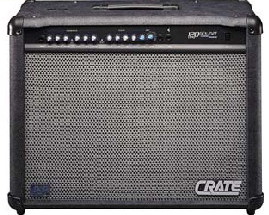 |
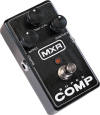 |
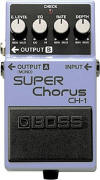 |
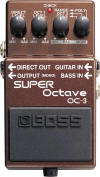 |
||||
| Settings | Settings | Settings | Settings | |||||
|
Channel: Shape: Low EQ: Mid EQ: Hi EQ: Reverb: |
Clean N/A 1.5 6 10 5.5 |
Output: Attack: Sensitivity: |
75% 50% 0%
|
Level: EQ: Rate: Depth:
|
33% 33% 33% 100% |
Level: OCT 1: OCT 2: Mode: |
25% 25% 0% Poly |
|
|
Effect order from Guitar to Amp |
||||||||


 |
||||||||
*Remember Effect suggestions are my suggestions for the home player. Usually suggestions are geared for a low budget. I purposely use effects and equipment that I know everyone can afford, and get their hands on, in an effort to prove that you can get a great sound without mortgaging your house.
_____________________________________________________________________
Basic Bass line and Chord progression Lesson
Below is a Bass line. Our job will be to take that Bass line and translate it into a chord pattern that moves with the Bass line but doesn't duplicate the Bass players part as far as Root notes go.
This is a very simple exercise but it's an awesome snap shot of what a Jazz jam is all about and how the chords you choose to use will dictate how the piece is perceived.
This will be in 4/4 time to keep it simple but it will have a 2/4 feel to it. Think Big Bad Bill if you're an Ed head.
The piece below is a take off on Big Bad Bill however Big Bad Bill is a classic chord progression. This tune below is in the key of A minor and is part of a future Vin Heuton track that we're producing for the site and future Skin Scuba CD, it's untitled as of yet. It's a good example to use here because I'm not going to be following the Bass line with the Bass notes of my chords 100%. In places the Bass will be doing a C and my Bass note might be a G. There is a lot of 5ths in this. Meaning, I'm using the 5th off of the Basses root note. This gives this piece a very warm sound. I'll also demo it on the video where I follow just the root notes with the Bass line and you'll easily hear the difference in how it comes across doing it that way as opposed to mixing it up a little to give it a bit more depth.
See video for help.
Bass
G____________________________________
D____________________________________
A____________________________________
E__5_5___3_3___1_1___0_0_____________
G____________________________________
D____________________________________
A____________________________________
E__5_5___3_3___1_1___0_0_____________
G____________________________________
D____________________________________
A____________________________________
E__5_5___3_3___1_1___0_0_____________
G____________________________________
D____________________________________
A____________________________________
E__5_5___3_3___1_1___0_0_____________
G_____________________________________________________________________________________________
D_____________________________________________________________________________________________
A________________________________________________5_5_5_5____________________3_3__2_2__3_3_3_3_
E_1_1_1_1__--5_5_5_5__6_6_6_6__7_7_7_7___1_1_1_1___________3_3_3_3__3_3_3_3____________________
G__________________________________
D__________________________________
A_____________________3~___________
E__3_3_3_3__3_3_3_3_________4______
Guitar Part
Notice the Bass notes or the lowest note in the Chord. In a lot of cases it's the 5th of what the Bass is doing.
Main Chord list
*t = Used your thumb to fret the note
Am C/G F/C E/B A7/C# Bb/F B dim D7 C7 B7 G/D C/G V2 C+/E <could also be called E+
E________________________________ 6_____________________3___________________
B________5______10____ 9_____8____6_________10__________3____5_____5________
G__5_____5______10____ 9_____9____7____7____11___3__2_ _ 4____5____ 5________
D__2_____2______ 7_____6_____7____8____9____10___2__1___5____5_____6________
A__x_____x______ x_____x_____x____8____8____12___3__2___5____3_____7________
E__5_____3______ 8_____7_____9_________7*t___10_______________3_____
________
** I'm not going to tab out all of these chords below in the progression. The chords are all above. It's up to you to memorize them and apply them to the tab hits below. I'll help you with this on the video.
\ = 1 chord hit
Main theme riff
Am C/G F/C E/B
E_________________________________________
B_________________________________________
G_________________________________________
D_________________________________________
A__\___\____\____\______\____\______\__\___\___
E_________________________________________
Am C/G F/C E/B
E_________________________________________
B_________________________________________
G_________________________________________
D_________________________________________
A__\___\____\____\______\____\______\__\___\___
E_________________________________________
Am C/G F/C E/B
E_________________________________________
B_________________________________________
G_________________________________________
D_________________________________________
A__\___\____\____\______\____\______\__\___\___
E_________________________________________
Am C/G F/C E/B
E_________________________________________
B_________________________________________
G_________________________________________
D_________________________________________
A__\___\____\____\______\____\______\__\___\___
E_________________________________________
Turn around
F/C A7/C# Bb/F B dim
E___________________________________________
B___________________________________________
G___________________________________________
D___________________________________________
A__\_\_\_\____\_\_\_\______\_\_\_\_____\___\_\______
E___________________________________________
F/C D7 G/D C7 B7 C7
E__________________________________________________________
B__________________________________________________________
G__________________________________________________________
D__________________________________________________________
A__\_\_\____\__\_\_\_\____\_\_\_\__\_\_\_\____\_\___\_\____\___\_\__\_\__
E_______7__________________________________________________
G/D C/G V2 C+/E
E___________________________________________
B___________________________________________
G___________________________________________
D___________________________________________
A__\_\_\_\__\_\_\_\____\______________\___________
E___________________________________________